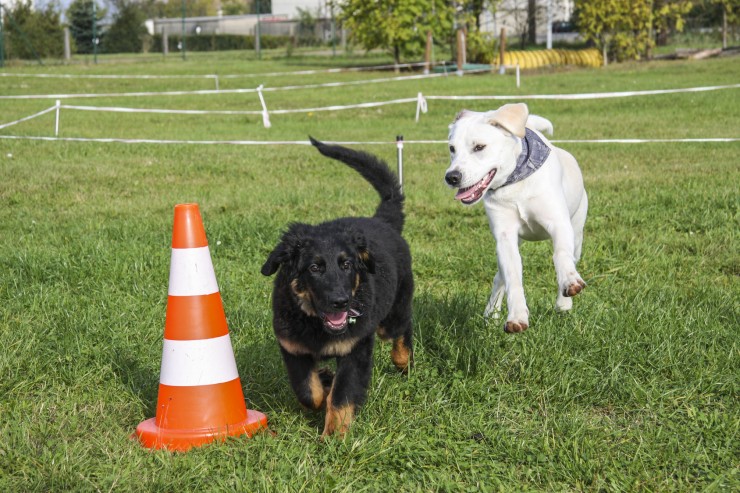The first thing that a vet will do when he thinks that a dog might have
hip dysplasia is reading the medical history of the dog, after which he
will examine the dog in detail.
Diagnosis
After the physical examination, the veterinarian will look at the joints of the dog to see if there are any signs that their motion is limited or reduced, if the joints are lax or if they creak, or if the muscles of the thighs are atrophied. The results, together with the symptoms that were mentioned above will tell the doctor if the dog suffers from hip dysplasia. You need to mention those symptoms that you observed when the doctor asks you about them, so he can form a full image of the dog抯 condition. He will watch the dog as he moves or walks around, and check if he can lie down or sit properly. Sometime, he will be able to diagnose the dog as having hip dysplasia just by doing.
Diagnosing hip dysplasia requires taking x-rays in most cases, and they抮e a tool that is very important to the diagnosis. Using them allows the doctor to find the disease both in cases when symptoms are present and when they are not (sometimes it happens). Taking an x-ray needs the dog to keep still, without moving, which means that the vet will probably need to give him some anesthetic. After this is done, he will be able to use the x-rays results to find out if the dog has hip dysplasia. The doctor can also use the x-rays to find out how much of a problem the hip dysplasia is and at what stage it is. This will determine what course of treatment the dog needs to take, and how it should be implemented.?The treatment will improve the dog抯 quality of life and take away some of the pain.
Causes
Hip dysplasia in dogs is usually caused by his genetic heritage. Studies have revealed that genetics play a great part in the appearance of hip dysplasia. What that means is that the medical history of the parents plays an important part in determining if hip dysplasia will show up or not. That抯 why there are breeds that have an increased chance of getting hip dysplasia. In most cases, the breeds with a big chance of getting hip dysplasia are the big ones, like German Shepherds, St. Bernards, Labrador Retrievers, Rottweilers, Golden Retrievers and Neapolitan Mastiffs.
However, genetics isn抰 the only reason why dogs can develop hip dysplasia. Other reasons why hip dysplasia shows up include environmental factors. These can influence the appearance of the disease. One factor that can influence hip dysplasia is the nutrition of the dog. What I mean by nutrition is the fact that dogs that become overweight are more likely to get this disease, since the added weight makes the joints more stressed. The second factor can be the type of physical activity, as jumping and climbing stairs can also add extra stress on the joints of the dog, when done too much. If the dog does this type of physical activity on a regular basis, it can add to the chance of developing arthritis.
The third factor that can contribute to hip dysplasia is a slippery bedding or flooring. If they puppy stays on wood or newspaper floors, they have an increased chance of getting hip dysplasia. A surface that is slippery will not make the dog get hip dysplasia, but it can worsen the situation. Even though hip dysplasia is caused by genetics, other factors can influence how the disease is expressed or how it develops.

 How Easy Is It To Look After A Guinea Pig?
How Easy Is It To
How Easy Is It To Look After A Guinea Pig?
How Easy Is It To
 Canine Rally - The Newest Uk Dog Sport!
Canine Rally - Th
Canine Rally - The Newest Uk Dog Sport!
Canine Rally - Th
 How To Get Your Dog To Cooperate For Photographs
How To Get Your D
How To Get Your Dog To Cooperate For Photographs
How To Get Your D
 Keeping Insects And Spiders As Pets - Introduction To Invertebrates
Keeping Insects A
Keeping Insects And Spiders As Pets - Introduction To Invertebrates
Keeping Insects A
 Bathing A Dog With Atopy
Bathing A Dog Wit
Bathing A Dog With Atopy
Bathing A Dog Wit